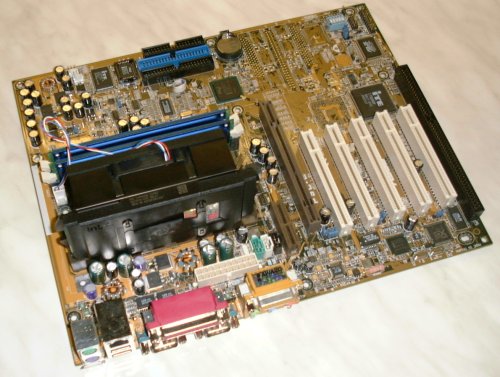The RDRAM Avenger - Intel's i840 Chipset
I820, Continued
My i820-testplaform was an Asus P3C-L motherboard.
This new i820-motherboard is the main reason why my review got delayed by about three days. Quite a while ago and still prior to i820's final release we received i820-motherboards from Intel that came with the initial three RIMM-slots. For some reason the performance of those nowadays obsolete platforms was significantly better than the new crop of the official i820-boards with only 2 RIMM-slots. As a matter of fact the new i820-motherboards score worse than BX in several NT-benchmarks, as you will see later. This is not an issue with the Asus P3C alone, all the other i820-boards we tested scored just as bad. Unfortunately Intel was unable to give us one of their new boards with only 2 RIMM-slots, so that we couldn't see if the performance of those boards dropped as well. My experience tells me however, that Intel-motherboards have never performed better than Taiwanese ones; usually the Intel-product was a bit slower. It would be very surprising if that should have changed with the release of i820.
The P3C-L that I used for testing sports some kind of 'all-in-one' PCB. You can see the free areas in the upper right corner of the picture. This is where Asus can put a SCSI-chip and/or an IEEE 1394 chip. One of the tiny chips in the front is the Intel 82559-network chip, which is responsible for the 'L' in the name of this Asus-board. You can also see an ISA-slot, which Asus made possible by using a PCI-ISA-bridge from ITE. The AGP-slot is an AGP Pro50 slot, the same as in case of the OR840. Next to it you can find the AMR (audio-modem-riser) slot.
Get Tom's Hardware's best news and in-depth reviews, straight to your inbox.
-
ognyanz Hi,Reply
REM: About the question "What should we see when testing the different chipsets against each other?"
Likely, or may be not, who knows.
